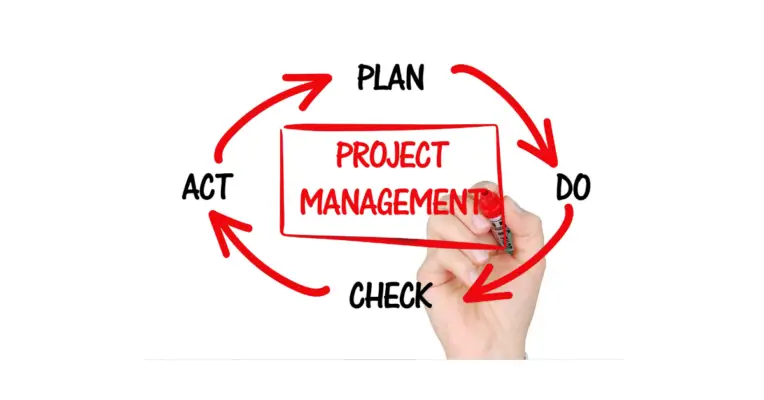Managing a construction project requires a nuanced understanding of many components, each integral to completing the endeavour.
This document distils years of industry wisdom into a chapter – a concise, systematic approach that outlines each phase of a construction project, from initial planning and design to completion and evaluation.
Detailing proven strategies, practical insights, and industry-standard practices, this PDF offers an authoritative roadmap for project managers, engineers, contractors, and stakeholders a use.
This step-by-step guide guarantees that every aspect of your construction project is handled with the accuracy, effectiveness, and professionalism required in today’s competitive environment.
Enhance your construction management acumen and embark on your next project with the confidence of having a definitive guide.
This article provides a comprehensive guide on managing construction projects, offering step-by-step instructions in a downloadable PDF format.
It outlines the essential development phases of a construction project, including planning, execution, and closure.
This guide will assist those working on construction projects to navigate the complexities of project management and achieve successful outcomes overview.
What is a Construction Project?
Managing a construction project step by step offers numerous benefits.
Firstly, it allows for a systematic approach to the project, ensuring that all necessary tasks and milestones are accounted for and completed in a timely manner.
Secondly, this method enables effective resource allocation and control, preventing unnecessary expenditures or delays.
Lastly, managing a construction project step by step promotes better communication and coordination among stakeholders, leading to improved collaboration and overall construction project management success.

Definition Of Risk Assessment In Construction
Benefits of Managing a Construction Project Step by Step
The step-by-step management approach in construction projects offers various advantages. By following a systematic process, construction project managers can ensure that all project requirements and objectives are met within the designated time frame and budget.
This approach involves the coordination and collaboration of the project team, which includes various stakeholders such as architects, engineers, subcontractors, and suppliers.
The project scope is defined and documented, and a project management plan is developed to outline the project workflows and schedules. This allows for efficient resource allocation and task delegation, minimizing delays and maximizing productivity.
Monitoring and reporting project progress enables timely adjustments and interventions as needed. Finally, the step-by-step approach ensures a smooth project closeout, with all project outcomes and deliverables properly documented and finalized.
AdvantageDescriptionEfficient resource allocationProper utilization of resources to minimize delays and maximize productivity.Timely adjustments and interventionsRegular monitoring and reporting to address issues and make necessary changes.Smooth project closeoutProper documentation and finalization of project outcomes and deliverables.
Planning Phase
The planning phase of a construction project involves several key steps to ensure its success.
These include:
- Defining the project objectives.
- Assessing the resources needed.
- Establishing the project budget.
- Defining the project team and roles.
- Developing a real-time construction process approach.
Each step is crucial role in laying the foundation for a well-managed and efficient construction project.
Defining the Project Objectives
Defining the project objectives in a construction project is crucial to establish clear project goals. Defining the project objectives is vital in managing a construction project effectively.
Project objectives provide a clear direction and purpose, ensuring all stakeholders are aligned and focused on achieving the desired outcomes.
These objectives serve as the foundation for the project plan and guide decision-making throughout the project lifecycle.
In a step-by-step introduction guide on managing a construction project, a section on defining project objectives would be contextually relevant.
This section will outline the importance of setting specific, measurable, achievable, relevant, and time-bound (SMART) objectives. Additionally, it would address the need to align the project objectives with the organisation’s overall strategic goals.
A downloadable PDF guide book on this topic would provide readers with a comprehensive resource to refer to during the project planning phase.
Assessing Resources Needed
Assessing the resources needed for a construction project involves a systematic evaluation of the materials, equipment, and manpower required to complete the project within the defined objectives and timeline successfully. This process is crucial for effective project planning and budgeting.
The following are key considerations in assessing project resources:
- Materials: Identify and procure the necessary construction materials, ensuring their quality, availability, and compatibility with the project requirements.
- Equipment: Determine the equipment needed for various project tasks and activities, considering size, capacity, and maintenance requirements.
- Manpower: Evaluate the required workforce, including skilled labour, supervisors, and project managers, considering their availability, qualifications, and experience.
- Contracts: Establish contracts with suppliers, subcontractors, and vendors to ensure the timely delivery of resources and adherence to project specifications.
- Risks: Identify potential risks and uncertainties related to resource availability, cost fluctuations, and dependencies, and develop contingency plans to mitigate these risks.
Effective communication and coordination among project stakeholders is essential for resource management, as it ensures smooth operations and minimizes delays or disruptions.
Efficient and satisfactory execution of construction projects within budget can be achieved through carefully assessing available resources and the involvement of all parties concerned.
Establishing the Project Budget
After assessing the resources needed for a construction project, the next step is establishing the budget structure. The project budget is crucial as it determines the costs associated with the project and helps in budget management.
Construction project management software can be used to create and track the project budget. This software allows for accurate cost estimates and helps identify potential cost overruns.
It is important to keep track of project progress in relation to the budget to identify and address any financial risks that may arise quickly.
In cases where additional crews or specialized equipment are needed, the project budget can be adjusted accordingly. Hiring professionals experienced in budget management is important to ensure effective control over costs and minimize the risk of budget overruns.
Defining the Project Team and Roles
Defining the project team and roles is essential in ensuring effective coordination and collaboration among individuals involved in the construction project. This step involves clearly identifying team members’ different roles and responsibilities to ensure the smooth execution of final construction contracts activities.
The project team typically includes a Construction manager, project manager, and other personnel with specific expertise in the construction industry. Each team member knows their responsibilities by defining these roles and can contribute to everything – the project’s success.
- Construction manager: responsible for overall supervision and coordination of construction activities.
- Project manager: oversees the entire construction phase, ensuring project goals are met.
- Team members: individuals with specialized skills who contribute to specific aspects of the project.
- Subcontractors: hired to perform specific tasks or trades within the project.
- Support staff: provide administrative and logistical support to the project team.
Defining the project team and roles also helps allocate resources efficiently, communicate effectively, and properly document project activities.

Are Project Managers In Demand In Australia
Developing a Real-Time Construction Process Approach
Implementing a real-time construction process approach is crucial in enhancing the efficiency and productivity of construction projects. This approach involves using technology to monitor and track various aspects of the construction process in real time terms, such as project timelines, resource allocation, and budget management.
Adopting this approach, project managers can clearly understand the project’s current status and identify any potential issues or delays early on. This allows for timely decision-making and enables proactive problem-solving.
A real-time construction process approach also enables effective collaboration and communication among project team members, leading to improved coordination and streamlined workflows.
Ultimately, by developing and implementing a real-time construction process approach, construction projects can be managed more effectively and efficiently, ensuring successful completion.
A step-by-step guide in PDF format can provide valuable insights and guidelines for project managers in implementing this approach.
Creating a Comprehensive and Detailed Project Schedule
Creating a comprehensive and detailed project schedule is essential for effectively managing construction projects and ensuring successful completion. A project schedule serves as a roadmap for the project management phase, providing a clear action plan and setting realistic project timelines.
To create a comprehensive project schedule, the following key elements should be considered:
- Project plans outline the project’s scope, objectives, and deliverables.
- Dependent tasks: Identifying tasks dependent on each other helps ensure smooth workflow and timely completion.
- Critical tasks: These are tasks that significantly impact the overall project timeline and must be prioritized.
- Individual tasks: Breaking down the project into smaller, manageable tasks allows for better tracking and allocation of resources.
- Detailed task definitions: To avoid confusion and delays, each task should have a clear description, duration, and assigned resources.
Execution Phase of the Construction Project Plan
The execution phase of a construction project plan involves several key points that are crucial for its success.
One of these key points is initiating the construction processes with mobile app technology, which can streamline communication, improve efficiency, and enhance collaboration among project team members.
Another important aspect is ensuring quality control and compliance requirements are met, which involves conducting regular inspections, adhering to industry standards, and implementing corrective actions when necessary.
Initiating the Construction Processes with Mobile App Technology
Utilizing mobile app technology can effectively initiate the construction processes. Mobile apps have become an integral part of project management in the construction services industry, especially during the planning phase of complex projects.
These apps provide a range of features and functionalities that can streamline various tasks and facilitate effective communication between different stakeholders.
Key features of mobile apps for construction project initiation include:
- Generation of initiation documents, such as project charters or project briefs.
- Management of construction contracts and documentation.
- Resource allocation and tracking.
- Prompt identification and implementation of corrective actions.
- Real-time updates and modifications to the construction schedule.
Ensuring Quality Control and Compliance Requirements are Met
After initiating the construction processes with mobile app technology, it is crucial to ensure that quality control and compliance requirements are met throughout the project. This can be achieved through a systematic and well-defined process.
The first step is to develop a comprehensive project plan that outlines the project’s objectives, scope, and timeline. The project plan should also include the different phases of project management, such as initiation, planning, execution, monitoring, and closure.
A risk management plan should also be implemented to identify and mitigate potential risks that may impact the project’s success. A communication plan should also facilitate effective communication among project stakeholders.
Lastly, a quality control system should be implemented to monitor and evaluate the project’s progress and ensure that it meets the required standards and specifications.
Monitoring Progress and Reporting to Stakeholders
To effectively monitor progress and report to stakeholders, a comprehensive reporting system should be established that provides accurate and timely updates on the construction project’s status. This ensures that all parties involved are informed about the project’s progress, potential issues, and any changes to the project plan.
Monitoring progress involves tracking key milestones, completion times, and resource management to ensure the project stays on track.
Reporting to stakeholders is crucial information for maintaining transparency and accountability. It allows stakeholders to stay informed about the project’s status, make informed decisions, and address any concerns or issues that may arise.
Poor communication and inadequate reporting can lead to misunderstandings, delays, and increased costs. To mitigate these risks, daily reports should be prepared and shared with the relevant stakeholders, including the project owner, en order to keep them updated on the project’s progress and any potential challenges.
Closing Out the Entire Project Plan
In the closing phase of a construction project, it is crucial to finalise all documentation to ensure a smooth transition and successful completion of future projects.
This includes compiling comprehensive project reports, updating drawings and specifications, and systematically archiving all relevant documents.
Finalizing all Documentation for Future Projects
Finalizing all documentation for future projects involves ensuring that all necessary documents are completed, reviewed, and organized systematically. This crucial step in effective construction project management ensures that projects are executed smoothly, on time, and budget.
The following key items should be considered when finalizing all documentation:
- Project Initiation Document (PID): The PID outlines the project’s objectives, scope, deliverables, and stakeholders.
- Contract Documents: These include the legal agreements between the project owner and contractors, defining the project’s scope, schedule, and budget.
- Contract Administrator: This individual oversees the contract administration process, ensuring compliance with contractual obligations.
- Additional Costs: Any potential costs or changes to the project’s budget should be documented and reviewed.
- Construction Teams: The roles and responsibilities of all construction teams involved in the project should be clearly defined.
Frequently Asked Questions
Are There Any Legal Requirements or Permits Needed for a Construction Project?
Legal requirements and permits are necessary for construction & procurement projects. These obligations are imposed by local, state, and federal laws to ensure compliance with safety regulations, environmental standards, zoning regulations, and building codes.
How Can I Effectively Manage and Communicate With the Project Team?
Effective management and communication with a construction project team is crucial for success.
Establishing clear roles and responsibilities, implementing effective communication channels, and fostering a collaborative environment can enhance team performance and project outcomes.
What Common Challenges or Risks May Arise During the Construction Project?
Common challenges and risks in construction projects include delays due to weather or unforeseen circumstances, cost overruns, quality control issues, safety hazards, and stakeholder disputes.
Effective project management strategies are crucial in mitigating these challenges and minimizing their impact.
How Do I Ensure Quality Control and Adherence to Safety Regulations Throughout the Project?
Ensuring quality control and adherence to safety regulations in a construction project requires systematic planning, implementation, and monitoring.
This involves conducting regular inspections, providing training to the workforce, and maintaining effective communication among stakeholders to address any issues promptly.
What Are Some Recommended Strategies for Managing Project Costs and Staying Within Budget?
Recommended strategies for managing project costs and staying within budget include thorough planning, accurate cost estimation, effective communication with stakeholders, regular monitoring and control of expenses, proactive risk management, and utilizing cost-saving techniques such as value engineering and bulk purchasing.

Conclusion
Managing a construction project requires careful planning and execution.
The planning phase involves defining project objectives, creating a budget, and contractor developing a timeline.
This is followed by the execution phase, where the project plan is implemented through tasks such as hiring contractors, procuring materials, and monitoring progress.
Finally, the project is closed by reviewing the completed work, ensuring all requirements are met, and documenting lessons learned.

Chris Ekai is a Risk Management expert with over 10 years of experience in the field. He has a Master’s(MSc) degree in Risk Management from University of Portsmouth and is a CPA and Finance professional. He currently works as a Content Manager at Risk Publishing, writing about Enterprise Risk Management, Business Continuity Management and Project Management.

